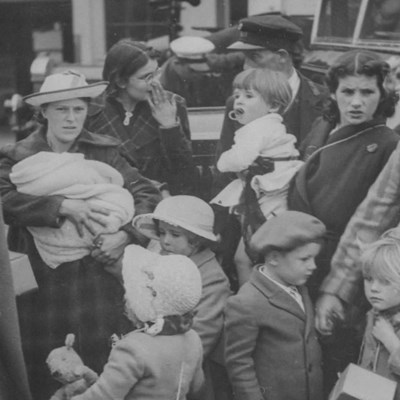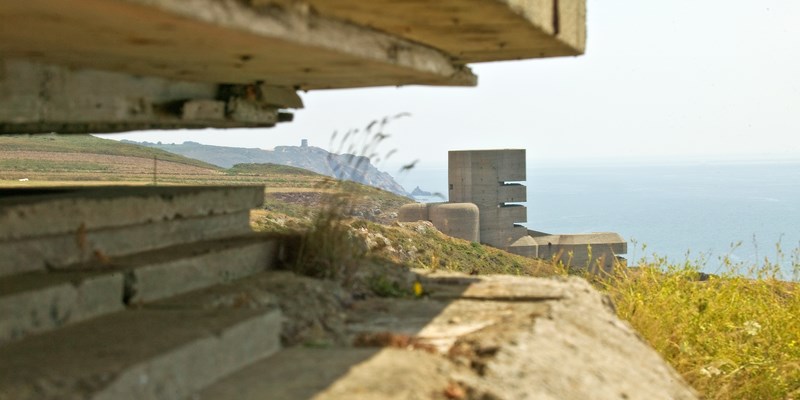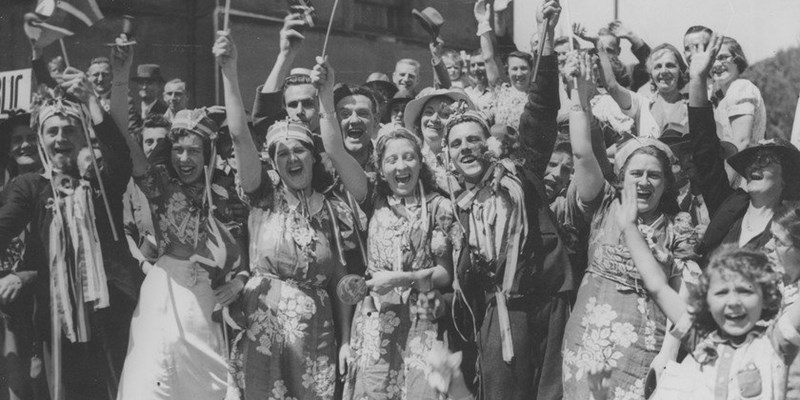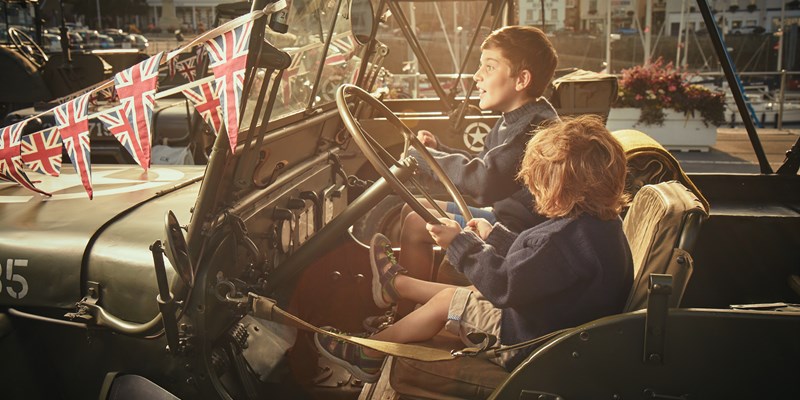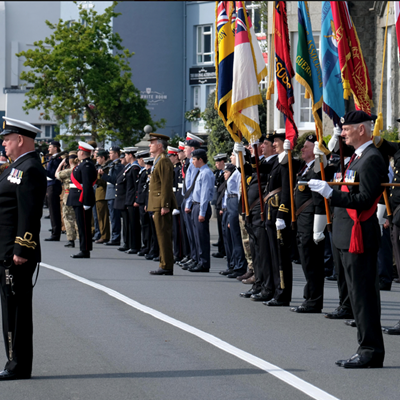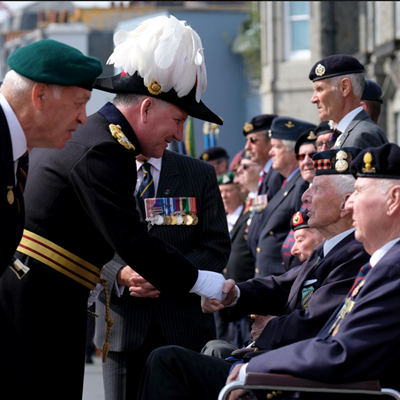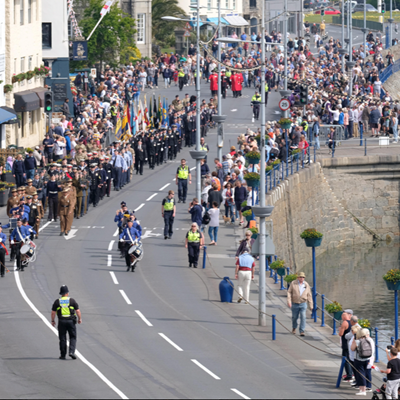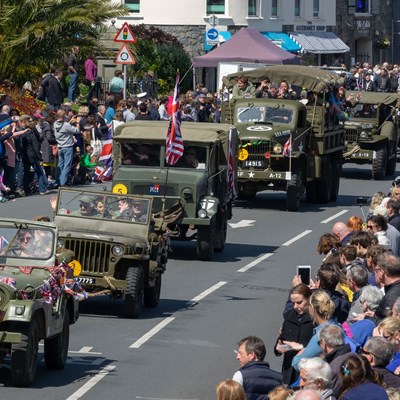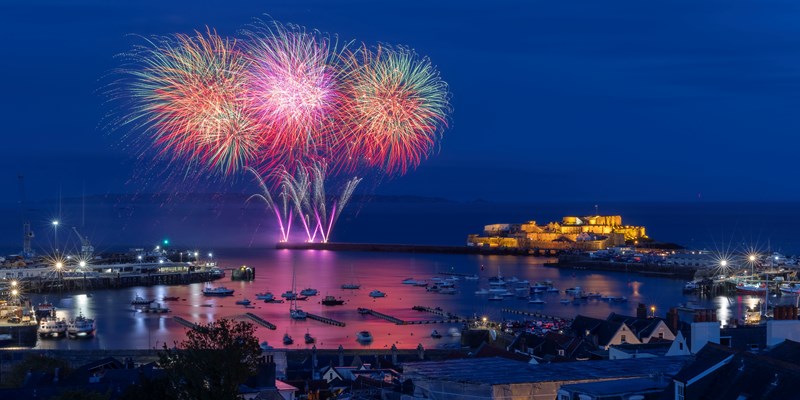'Hostilities will end officially at one minute after midnight tonight. And our dear Channel Islands are also to be freed today.'
That was the announcement Channel Islanders had waited five long years to hear. On the 8 May 1945, Prime Minister Winston Churchill announced the end of the war in Europe - and the Channel Islands would be freed the following day.
The German Occupation of the Channel Islands between 1940 and 1945 played a huge part in shaping both the landscape and the people of Guernsey. Each year on 9th May, Guernsey celebrates Liberation Day, to mark the moment the Island became freed from occupation. Alderney has its own commemoration, Homecoming Day, in December, and Sark celebrates its Liberation on 10th May.
This guide explores what happened to Guernsey during the Occupation, and why we celebrate Liberation Day.
How did the Islands become Occupied?
German forces had been sweeping through Europe towards the northern coast of France during the early part of 1940, and by mid-June had reached Cherbourg. On 19 June 1940, the Channel Islands were officially demilitarised and abandoned to the enemy by the British Government. An order was given for the 'Evacuation of Children' and parents were told they were to register that evening and report to the harbour at 8am the following morning with their children packed and ready to leave. At very short notice, 4000 school children were evacuated and left familiar surroundings to travel to towns and environments far removed from their island-life. Mothers of infants under-five were allowed to accompany their children but all those of school age were to travel within their school groups, with only some mothers invited to act as helpers.
In all, 17,000 islanders left Guernsey - almost half the population at the time - and made the crossing to Weymouth. For many, this was the first time they had ever left the island.
On Friday 28 June, Guernsey experienced its first air raid which killed 33 islanders and injured a further 67. The harbour and fruit export sheds were targeted, with the Germans mistakenly believing that they were military installations, and that tomato trucks at the harbour were military vehicles.
The Occupation of Guernsey began at around 8.30pm on Sunday 30 June, when five Junker troop carriers landed at Guernsey airport. The following day, German troops arrived and that afternoon their flag was raised. More troops arrived later until the numbers roughly equalled that of remaining islanders. Attention then turned to the smaller Isles of Sark and Alderney. Alderney had been evacuated with only 12 civilians remaining. A company of troops arrived to occupy the Island. German officers arrived on Sark on 2 July with a further 10 soldiers arriving on Sunday 4 July.
Images above are from The Priaulx Library & Occupation Archive
What happened during the Occupation?
Nazi law was introduced to the Islands, and conditions under which they would rule were published in the local newspaper. This included race and religious laws, particularly targeting Jewish people. Most Jewish people had left the Islands before the Occupation, but some remained and others had come to the Islands to escape persecution in mainland Europe.
The day-to-day running of Guernsey was down to the Controlling Committee, chaired by Ambrose Sherwill, who was later deported for his involvement in Operation Ambassador in July 1940. In this unsuccessful mission, British Commandos came to the occupied Island for reconnaissance, prisoner capture and aircraft destruction. Sherwill later became Bailiff of Guernsey (1946 - 1959) and was knighted in 1949.
The Controlling Committee introduced Occupation money to the Islands, with German occupying forces using Third Reich script, as well as introducing European time. Troops went about heavily fortifying Guernsey, building new reinforced bunkers as well as adapting existing fortifications and adding an array of light and heavy guns. Most of these bunkers and batteries remain today with some open to the public.
Food was in short supply during the Occupation, especially towards the end, causing trouble for both locals and occupying forces. Access to beaches was limited, they were heavily defended with barbed wire and mines. Fishermen were allowed out to sea in their boats, albeit with a limit on distance from the shore and an accompanying German soldier. Islanders grew what they could, including tobacco, and also produced salt. Bramble and nettle tea were commonly drunk and seaweed was used in cooking.
A Red Cross vessel, the Vega, made six trips to the Islands with aid parcels, including flour and medical supplies, amongst other things. Some Red Cross messages also got through to the Island from loved ones in Britain.
With radios forbidden, Islanders were cut off from Britain. Any information on the progress of the war was filtered and distorted by Nazi propaganda. Despite little communication with the outside world and a huge enemy population, there were still small acts of resistance. Minor acts, such as painting V signs over German swastikas, were frequent. Some Islanders sheltered escaped slave workers despite the severe cost if discovered.
Liberation
Although Victory in Europe (VE Day) was on Tuesday 8 May the German government had not officially sanctioned the surrender of the Channel Islands.
The German commander, Admiral Hoffmeier, refused to surrender the Channel Islands until the early hours of 9 May 1945. Surrender was completed by Major General Hiner and Captain Lieutenant Zimmerman aboard the HMS Bulldog. That Wednesday morning, the St Peter Port seafront and harbour were packed with excited islanders. The first British Troops landed in St Peter Port to find jubilant crowds. While Guernsey and Jersey were freed on 9 May, Sark was not liberated until the following day and the German troops in Alderney did not surrender until 16 May.
Food supplies were brought to the Island on 12 May. The landing craft used to deliver large amounts of supplies were then used to transport German prisoners of war to the UK. 1,000 German troops remained behind to help the clear up operation, removing land mines and dismantling the large guns, which were then dumped out to sea.
The evacuees returned over the summer months, businesses were restarted, new ones were founded and the growing industry flourished.
Why do we celebrate?
Liberation Day gives islanders a chance to remember the days of Occupation and celebrate their freedom. Many have family histories and stories from the Occupation, and so have been directly impacted by the events that took place all those years ago.
The day is filled with the pageantry of Church and Military Vehicle parades, as well as a wide range of entertainment and activities for all age groups. The family day attracts thousands of people to the St Peter Port seafront, where many of the celebrations take place, and Parishes across the Island also host their own community events.
You can find more information about this year’s Liberation Day events here.




